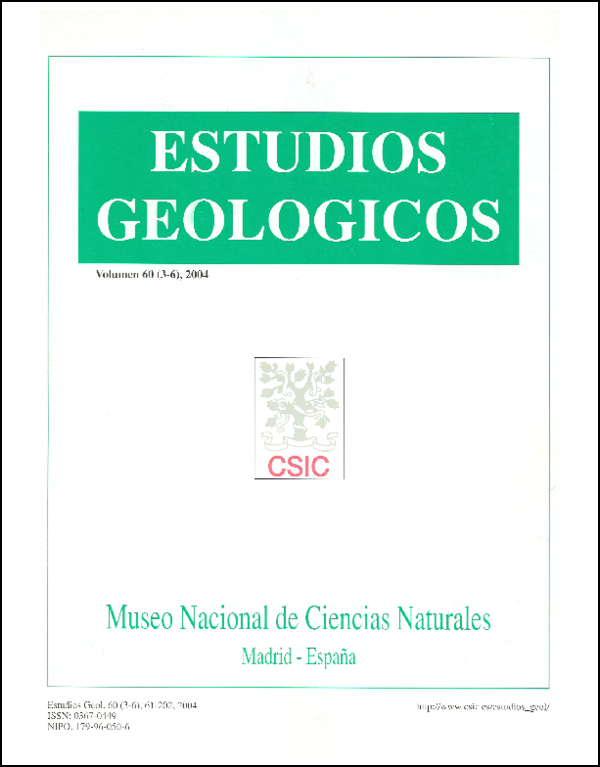Anatomie d’une marge passive hybride. Marge Ifni/Tan-Tan (sud du Maroc) au Mesozoique: apports des donnees geophysiques
DOI:
https://doi.org/10.3989/egeol.04603-683Keywords:
Passive margin, Rijt, Seismic reflexion, Magnetism, Gravimetry, MesozoicAbstract
The formation of the Ifninan-Tan margin started during the Triassic-Liassic extensional event, and continued during the Jurassic to present opening of the central Atlantic. This margin is located to the S of the South-Atlas lineament, between two contrasted geotectonic scenarios: the N, where the effect of the atlasic and alpine tectonics is spectacular, and the S, where this does not occur. The Ifninan-Tan margin is characterized by a series of post-rift deposits only slightly deformed and disturbed by salt diapirism towards the ocean. These series completely mask the structures of the rift, and they have been studied with the abundant information gathered by the oil exploration campaigns (seismic reflection and drilling), and with the analysis of gravimetrical and magnetic field-potential data. The study of the rift structures (both inland and offshore), highlights the difference between two sectors of the platform: (i) a NE sector, where the upper part of the pre-rift substratum is not very deep, and where the dominating structural style is constituted by half-grabens and horsts; and, (ii) a SW sector where grabens dominate. This paper shows that two structural styles and modes of extension can coexist on the same passive margin, one hundred kilometers apart. The differences described here are imposed by the structures inherited from the Hercynian evolution.
Downloads
Downloads
Published
How to Cite
Issue
Section
License
Copyright (c) 2004 Consejo Superior de Investigaciones Científicas (CSIC)

This work is licensed under a Creative Commons Attribution 4.0 International License.
© CSIC. Manuscripts published in both the print and online versions of this journal are the property of the Consejo Superior de Investigaciones Científicas, and quoting this source is a requirement for any partial or full reproduction.
All contents of this electronic edition, except where otherwise noted, are distributed under a Creative Commons Attribution 4.0 International (CC BY 4.0) licence. You may read the basic information and the legal text of the licence. The indication of the CC BY 4.0 licence must be expressly stated in this way when necessary.
Self-archiving in repositories, personal webpages or similar, of any version other than the final version of the work produced by the publisher, is not allowed.















